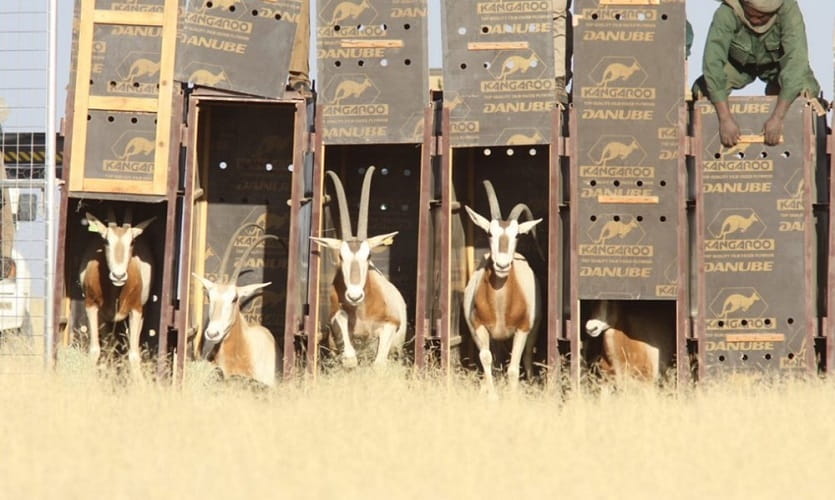Conservation zoos have powerful potential to reverse extinction

IMAGE: Long 'extinct' in the wild, the scimitar-horned oryx has been reintroduced in Chad, Africa.
A ground-breaking study led by the Zoological Society of London and co-authored by ecologists at Liverpool John Moores University has revealed the astonishing potential for conservation zoos, aquariums, botanical gardens, and seedbanks across the world to bring animals and plants back from extinction.
Published today (Friday 24 February) in Science, the research is the first to comprehensively evaluate the 96 ‘extinct in the wild’ animals and plants that, since 1950, have survived only in the care of zoological and botanical institutions - after being driven to extinction in the wild, largely as a result of human-driven activities such as habitat destruction.
The paper outlines how immense collaborative efforts by these conservation organisations - working alongside governments and partners responsible for wild habitats - have combined to prevent extinction and allow some species to successfully reclaim their wild status.
But, it warns, existing solely under human care is not a secure place for these species, revealing how close we are to forever losing many more.
Lead author Donal Smith at ZSL’s Institute of Zoology, said: “Without these dedicated organisations and their conservation efforts, we would have already lost species like scimitar-horned oryx, several Polynesian tree snails, and the yellow flowering toromiro. Thanks to decades of tireless work saving species, we have the opportunity to re-establish more populations in the wild; it’s imperative that conservation zoos, aquariums, botanical gardens and seedbanks are given the financial - and inter-governmental - support to do so.”
Through collaborative breeding programmes, fieldwork and research, ZSL has already worked alongside many partners to return a number of extinct species to their wild habitats, such as Partula tree snails to the islands of French Polynesia and the scimitar-horned oryx to Chad – and has plans to return the colourful sihek (Guam kingfisher) to the wild later this year.
“But despite heroic efforts, failures are about as common as successes,” added Donal. “Cases like the Catarina pupfish, sadly lost forever in 2012, remind us how fragile this space can be - whereas the European bison, once restricted to a small population under human care, is now thriving in the wild, offering an inspirational example of what pioneering conservation work can achieve."
The paper also highlights the divide between animal and plant species, with more attention to translocating animals over plants, despite both being equally represented as extinct in the wild; of the 12 species for which wild populations have already been re-established, only two are plants, reflecting the fact that currently only 23% of extinct in the wild plant species have undergone translocation attempts, compared to 67% of animal species.
Sarah Dalrymple, a reader in conservation ecology at LJMU's School of Biological and Environmental Sciences and study co-author explained: “There are several reasons why extinct in the wild plant species might be less frequently the focus of translocations, including a lack of suitable individuals for planting and changes to their original habitat. However, attitudes are shifting, with more emphasis on botanic gardens working together and finding suitable wild homes away from the site of origin, offering great hope for future plant recovery.”
Sarah is part of a new DEFRA Task Force for Species Reintroductions in England and says plants play a crucial role in maintaining and restoring habitats, like peatlands and says things like nutrient cycling, carbon sequestration and pollination can be part of species reintroduction plans.
Axel Moehrenschlager, from the IUCN’s Conservation Translocation Specialist Group and study co-author said: “It will take Herculean collaborative action to return all extinct in the wild species to the wild, which is what all zoos, aquariums, botanical gardens, and seedbanks globally would ultimately like to see. As the world addresses the threats of climate change and habitat loss, these organisations will continue to play vital roles in preventing further biodiversity loss and ultimately driving species recovery.”
Listen to Dr Sarah Dalrymple discussing plant reintroduction in the UK on BBC Radio 4’s Farming programme.


